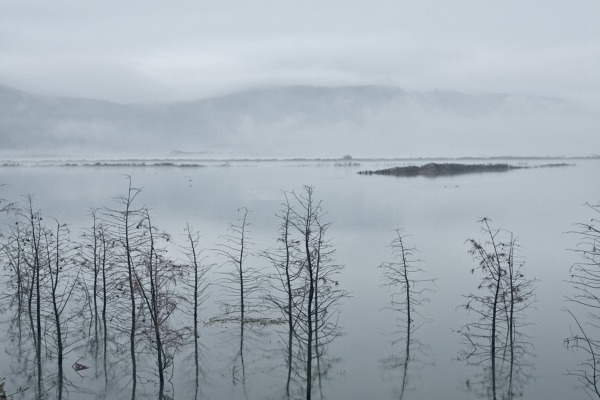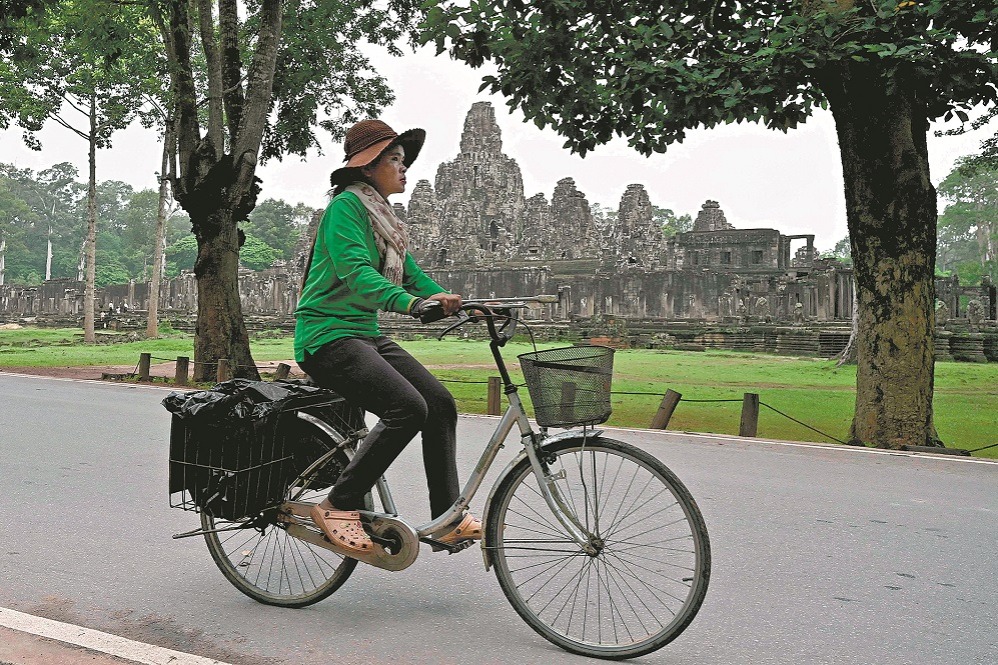A mountain, a lake and sheer beauty you can breathe
By Zhang Lei/Zhou Furong/Lu Yunjun | China Daily | Updated: 2020-01-18 12:37

Among the ruins on the foothill, along stone steps surrounded by green trees and through the neat and clean stone archway, visitors will spot a tomb dedicated to Yu Zhong. Next to this is Yushan Park, which was built in 1931. After numerous renovations, the park attracts many visitors eager to enjoy its carpet of lush green grass and its elegant pavilions and bridges. The Lake Center Pavilion, Jiuqu Bridge and the Yu Zhong Tomb have been fixtures in the minds of generations of Changshu people.
In the middle of Yushan's bamboo forests hide exquisitely manicured tea gardens. Climbing to Jianmen Gate, which is more than 200 meters above sea level, visitors can see rows of buildings in the green shadows spread along the foot of the mountain, and further away are checkerboard-like green fields and rice fields cut for the Shanghu Lake waterway. Further away is Shanghu Lake and its buildings. For thousands of years people of the area have had an intimate relationship with this mountain. It is not the preserve of hikers but of anyone who can eat, drink, swim and indeed simply breathe.
The locals usually start a day with a bowl of xunyou (mushroom oil) noodles and a cup of Yushan green tea. Xun is a collective name for the fungi produced around Yushan Mountain. Every year during the mushroom collection season, people who live nearby get up early and use flashlights to look for mushrooms in the mountains. Picking fresh mushrooms, refining them with rapeseed oil, and adding some simple condiments such as salt and soybean sauce are good enough to highlight its delicate flavor.
It has become the most characteristic topping for local noodles. At 7 o'clock in the morning, people gather in pairs at tea houses, drinking tea and eating mushroom oil noodles, a simple set menu unlike the Cantonese style morning tea breakfast, which involves drinking black tea and eating a variety of small bite-sized portions of food served in small steamer baskets or on a small plate.
You can never talk about Yushan without mentioning Shanghu Lake. It is said to have been named after Jiang Shang, a Chinese noble who helped king Wu of Zhou overthrow the Shang Dynasty. He once led the life of a recluse here. Because the lake is at Yushan's base it is also called Piedmont Lake.
If you happen to take to the lake on a boat in drizzly rain, chances are that you will be treated to the delightful sight of a lake surface that looks like a splash of ink on a grand landscape painting. Another fine sight to savor from the lake is Yushan, grass and trees along the lake's shores and a three-hole stone bridge that connects a lakeside path.
Cultural relics are everywhere to be found in Changshu. As you walk along a path in Yushan Park, a piece of Taihu Lake stone you come across just maybe the Qin Xue (snow exuding) stone that Zhao Mengfu, one of the greatest painters and calligraphers of the Yuan Dynasty (1271-1368), collected.
Jiangnan began to prosper during the Eastern Jin Dynasty when it accepted a large number of northern immigrants with an open mind and open arms. After more than 270 years of growth the Jiangnan region became China's economic center during the Tang and Song dynasties. It was also during this period that the proverb "When Suzhou and Huzhou have a harvest, the whole country is full" became well known.
In the eyes of the pragmatic people of Changshu, its profound wealth derives not only from the scenery south of the Yangtze River, in the shape of its beautiful lakes and mountains, but also from the material foundation of economic and cultural prosperity in the city.























